Worm Swag Review
A little bit of history
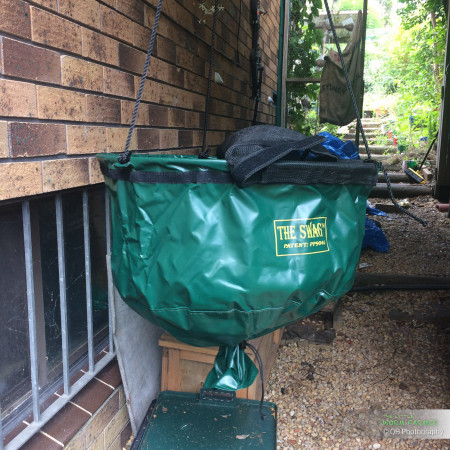
When I decided to get more seriously into worm farming, I was researching on various models of worm farms that I could use. Not knowing anything, then, about the importance of breahability, depth, surface area etc... what I was after was the look... Then I read a lot of good things about the Worm Inn and found the Red Worm Composting blog and The Worm Dude (the manufacturer) where you could see the product under tests and it was amazing. Jerry "The Worm dude" Gach was throwing all sort of scraps without chopping, like whole pumpkin, never torn or shred paper or cardboard etc... and the bin would digest all of it so fast. Later on I discovered that the secrets lies in the material being used: Cordura. It is durable but most importantly it is very breathable.
We need to remember that worms and other organisms in a worm farm are aerobic creatures: they need oxygen to live and thrive. In a plastic stacking system, air comes mainly from the top which is covered by a lid with just few tiny wholes, some models have small holes on the sides too. Other air flow locations are gaps between trays, the spigot if you leave it open and in some models the holes inside the legs. But still this is not enough and the proof is most of us always end up with a muddy vermicompost and not that light and fluffy material that we usually see in videos. This muddy condition can be fixed by feeding the worms more carbon rich material (carboard, newspaper etc...) in addition to the food scraps but it is still a pain. So those organisms need oxygen but the stacking bins are quite limited so the density of worms in those plastic trays are limited to the average of 2 lbs per sqft in ideal conditions. A CFT like Gargantua has an open top and bottom so airs comes in and flows much better and thus it can sustain double the density of worms up to 4 lbs per sqft in ideal conditions. The Worm Inn and its bigger brother the Worm Inn Mega on the other hand has air coming through from all direction thanks to the breathable fabric and can sustain up to 6 lbs per sqft in ideal conditions with some rare farmers claiming 8 lbs per sqft. Knowing that in practice 1 lbs of worms eat 1 lbs of food per week you can see how it will affect the amount of food scraps a bin can process depending on the worm density it can sustain.
At the time I could not justify the price of a new worm bin let alone a Worm Inn shipped from the USA to Australia.
During my research I also noticed the Worm Swag which is an Australian worm farm and thought it was very similar to the Worm Inn. I then discovered that Bentley "Compost Guy" Christie from Red Worm Composting blog was inspired by the Worm Swag and created his poor man version of it using a pair of jeans he called The Creepy Pants Vermicomposter those pants then inspired one of his reader to create a more professional looking worm farm which very soon became the Worm Inn now owned by Jerry "Worm Dude" Gach (geez how would this sound to you: Quoc-Huy "Little Worm Farmer" Nguyen Dinh ?????!!!! ROFL).
My Worm Swag
So for a while, the Swag was a system I have considered many times but I needed to wait till I could financially afford one. With changes in my life and the worm business started, I decided to get a couple of them on Gumtree.
I was very excited when I received them few days ago but still waited till the weekend because my Thien-San my little 5 year old boy wanted to open the parcel with me.
So yesterday we all went opening those large parcels and San helped me setting it up and adding some bedding material in it. Here are some photos:
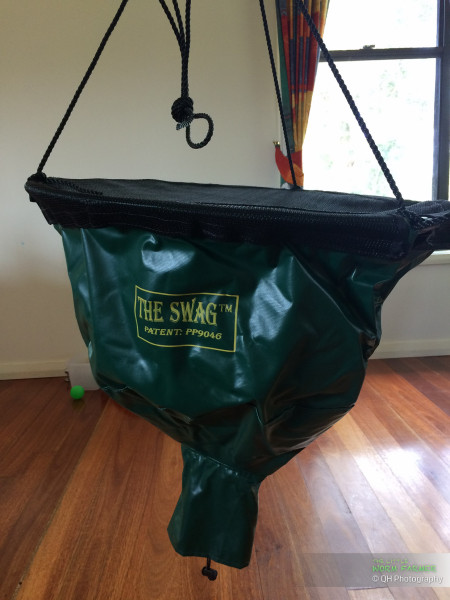
This is The Swag
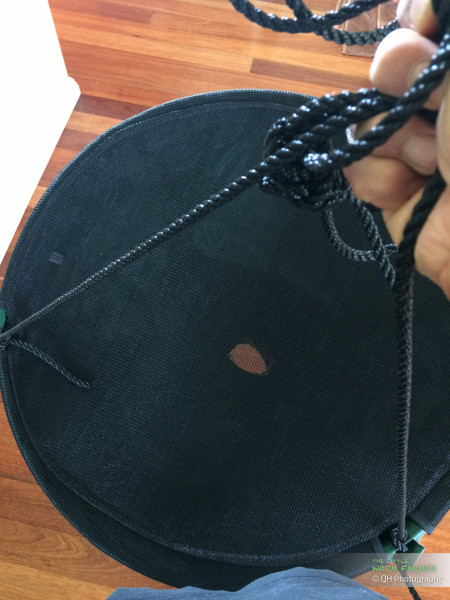
The lid is made of a mesh fabric which allows great airflow and prevent flies from coming in
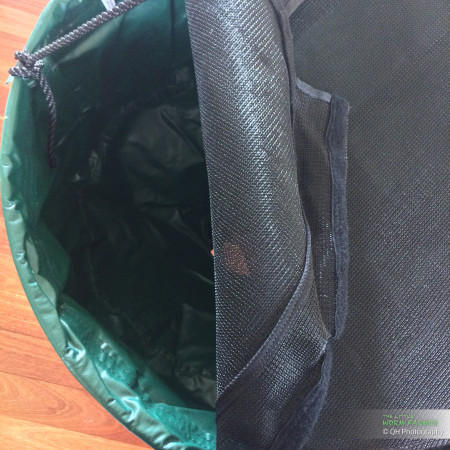
The mesh is held in place with velcro
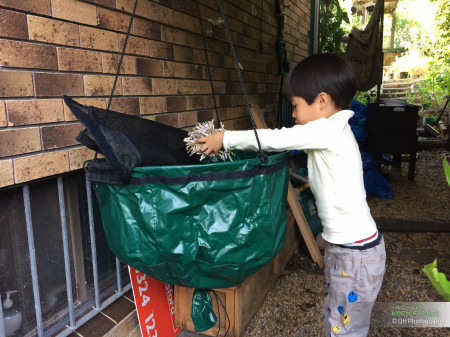
San helping me with the setup
For those who prefer seing moving images, here is a little video:
First impressions
I really love the idea and design. However if you don't have a tree or some hooks on the ceiling then you would need to buy the extra legs that cost almost the price of the Swag itself. But I liked seeing the Swag swining like a hammock when the breeze was blowing thru the alley. However I'm not sure how it will handle one of our Australian storms, that will be interesting and I will probably have another video for you guys ROLF.
The top diameter is 60cm (2 ft) which makes a surface area of 0.28 sqm (3 sqft) which is about half the surface area of Gargantua my CFT. The depth is only 43cm (17") form top to where I tied the rope on the bottom opening.
The Good
- it is easy to install: no screw, no glue, no parts to guess where they fit into. Being made of fabric all you need to do is expand it, attach the three ropes and suspend it somewhere
- no lid but a mesh cover means more airflow which a great advantage in terms of performance
- 3 sqft of surface area is great especially with the increased airflow will allow higher worm population density. Expecting it to reach and maybe exceed the max end of the average worm density in a regular plastic tray, so should be able to reach 2 lbs/sqft or a bit more. That means 6 lbs or more red wigglers consuming in average 6 lbs or more food scraps per week.
- the design is not too bad, I like the change of having a swinging worm farm instead of the regular on the ground style. It might even help with rodents, to be confirmed
- it can be flatten down for transport and is very lighweight, not that you would transport your worm farms every day but this is still nice
The Bad:
- the material is not breathable, it is totally waterproof. This will reduce the amount of oxygen that gets in and might reduce performance. Update: after several months of use, I've been nicely surprise that the Swag is performing extremely well, see the Worm Swag food challenge - part 1
- the second point is depth. At only 43 cm (17 in) it is below the minimum requirement of 20" to be considered as a real CFT (Continuous Flow Through). That is the minimum depth recommended by Vermiculture Technology for harvesting a vermicompost free of worms and cocoons. Update: after filling in the Swag, the actual depth has changed to 48cm (about 19 in).
- the mesh cover is a great point, however, from what I could tell from the pictures of the Worm Inn the mesh size on the Swag is bigger which means some smaller flying insects such as fruit flies might still be able to go through. To be confirmed
- the mesh cover does not cover 100% of the opening, maybe 99.99% of it. There are gaps where the three ropes attach to the frame of the Swag. This can be a potential entry or exit point for external critters and worms. But let see how this is in practice.
- no lid but a mesh cover means it will be receiving rainwater if installed outdoor.
The Ugly
I can't help myself but be disappointed with the material in use. I did not expect it to be Cordura but at least something similar. But what I found when opening the package did not impress me. The fabric is strong for sure, it looks like it can handle the weight once full. My disappointment is that I couldn't see how this fabric could be breathable at all. It looks like the same fabric as the waterproof lining of a backpack or a raincoat. I took a shopvac and tried to suck air thru the fabric to no success. The vac was struggling like hell and my facial hair could not feel any air movement through the fabric. If you know of a better way to test for fabric breathability please let me know :-D. See for yourself:
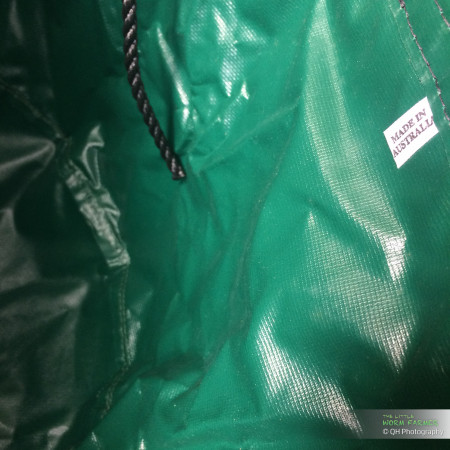
Does it make The Worm Swag a bad choice?
No, I think The Worm Swag is still a very good worm farming system when compared to those stacking plastic systems such as the Can-O-Worms, Worm Cafe or Worm Factory 360 just to name a few.
The fact that the lid is a mesh will solve so many problems with worms trying to escape, not because the mesh will retain them inside but because a better airflow means the worms are not suffocating in their bedding and won't need to escape. But for sure it will be useful for species of worms that tends to explore their environment such as the Perionyx Excavatus (Blue Worms) or Eudrilus Eugeniae (African Nightcrawlers). However one would need to find a way to protect the bin from the rain or the excess water will leach away a lot of the nutrients.
I always leave the tap/spigot on my plastic trays open and never collect the juice or leachate (if it ever gets generated as I always add plenty of dry cardboard to absorb it). The bottom of The Swag is not tightly sealed so the leachate (and air) flow through it. If you want you can put a bucket underneath but I just let it flow to the ground.
If my suspicion on the lack of breathability of the fabric is right, then thinking positively: it has the advantage of not drying too fast like the Worm Inn. That means you could go on holiday for a month (maybe two) and not have to worry or need to ask someone to come and water it regularly although you might want to put a sheet of plastic on the surface of the bedding to reduce water evaporation.
Do I recommend The Swag ?
Even though it is too early for me to give any real answer as I have yet to try this new (to me) system. I believe that if you need to make a choice between a system like the Can-O-Worms or the Swag, then you should go with the Swag if you can suspend it, but also buying the legs will set you for almost double price. But the Worm Inn Mega will perform much better thanks to the well ventilated top. A few times I see new stacking system owners ditching their worm farm lid and replacing it with a flyscreen or cut a large opening in the lid and cover it with a mesh, the Swag comes with a great mesh cover although not perfect.
The large surface area and the better top ventilation will also help the Swag to process more food scraps compared to other plastic systems.
If compared to the Worm Inn I think the Worm Inn is still the best domestic worm farming system due to the use of Cordura a much better fabric in terms of breathability which allows higher worm population density and hence a higher composting capacity. However, importing a Worm Inn Mega (which size is closer to the size of the Swag) to Australia will cost you more.
That's it for now, I will try to run this system for a while. Probably one with ENC and one with blue worms or a mix of blue worms and red wigglers. I will of course make an update on it. In the mean time, if you have used The Worm Swag then I would like to hear your opinion on it.
Follow-up posts:
Posted
in
A day in a worm farm, The Worm Swag, Product Reviews on Dec 12, 2016
by Quoc-Huy Nguyen Dinh
